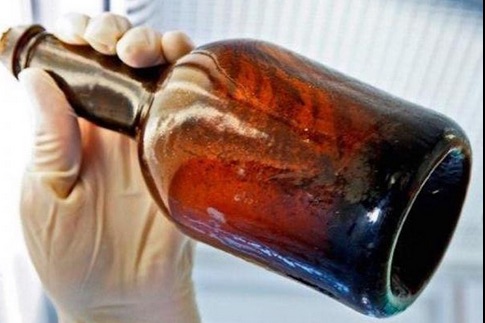Analysing beer from shipwrecks can teach today’s industry about how drink ages, and offer ideas for reducing microbial spoilage, say researchers.
Beer was recovered from a 1840s shipwreck in Finland, and researchers have published an analysis in the Journal of Agricultural and Food Chemistry.
[fwdevp preset_id=”8″ video_path=”pGAkI18GhDA”]Brian Gibson and colleagues explain that in 2010, divers discovered an old schooner at the bottom of the Baltic Sea near Finland. Archeological evidence suggested the ship went down about 170 years ago. It was loaded with goods including bottles of champagne and beer. The beer was diluted with salt water, but it contained enough of the original ingredients for the researchers at VTT Technical Research Centre of Finland Ltd. and the Technical University of Munich to analyze and get an idea of the initial recipe.
When the researchers took a sip, they weren’t able to discern the beers’ intended flavors. High levels of organic acids, produced by bacteria growing in the bottles for years, gave the samples vinegary, “goaty” and soured milk flavors that overpowered the original fruity, malt or hop profiles. However, analytical testing created a picture of what the beer may once have been composed of. For example, they determined that samples from two bottles were different beers based on their hop content. They also found that yeast-derived flavor compounds were similar to those of modern beers, though with a higher than usual content of rose-like phenylethanol.
Agencies/Canadajournal
 Canada Journal – News of the World Articles and videos to bring you the biggest Canadian news stories from across the country every day
Canada Journal – News of the World Articles and videos to bring you the biggest Canadian news stories from across the country every day




It is really pretty old beer, but I know bar which from time to time sales much older beer while there claiming that beer is fresh.